Quality Control Report: Strategic Total Quality Management
VerifiedAdded on 2022/11/25
|5
|500
|86
Report
AI Summary
This report delves into the realm of quality control, examining the evolution of management approaches. It begins by exploring the traditional methods employed by senior management, such as the PDSA cycle, and highlights the significance of Deming's principles in achieving quality. The report then transitions to the strategic view of total quality management (TQM), outlining its benefits in enhancing leadership, stakeholder relationships, and organizational performance. The report provides an example of Toyota's TQM implementation, emphasizing continuous improvement through employee participation and reduced defects. Ultimately, the report underscores the importance of a comprehensive, strategic approach to quality control, where quality assurance is the responsibility of all employees, not just top management.
1 out of 5
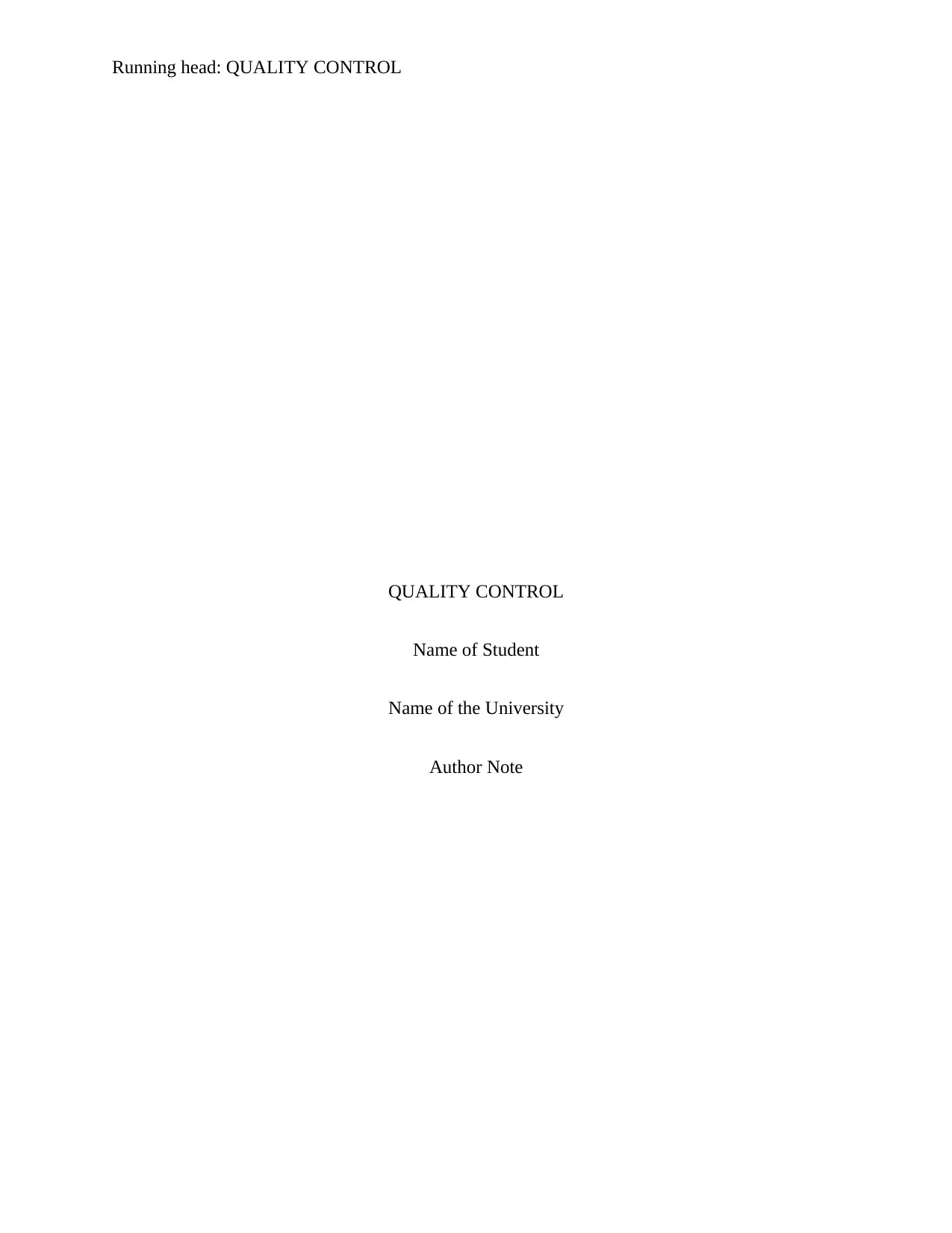
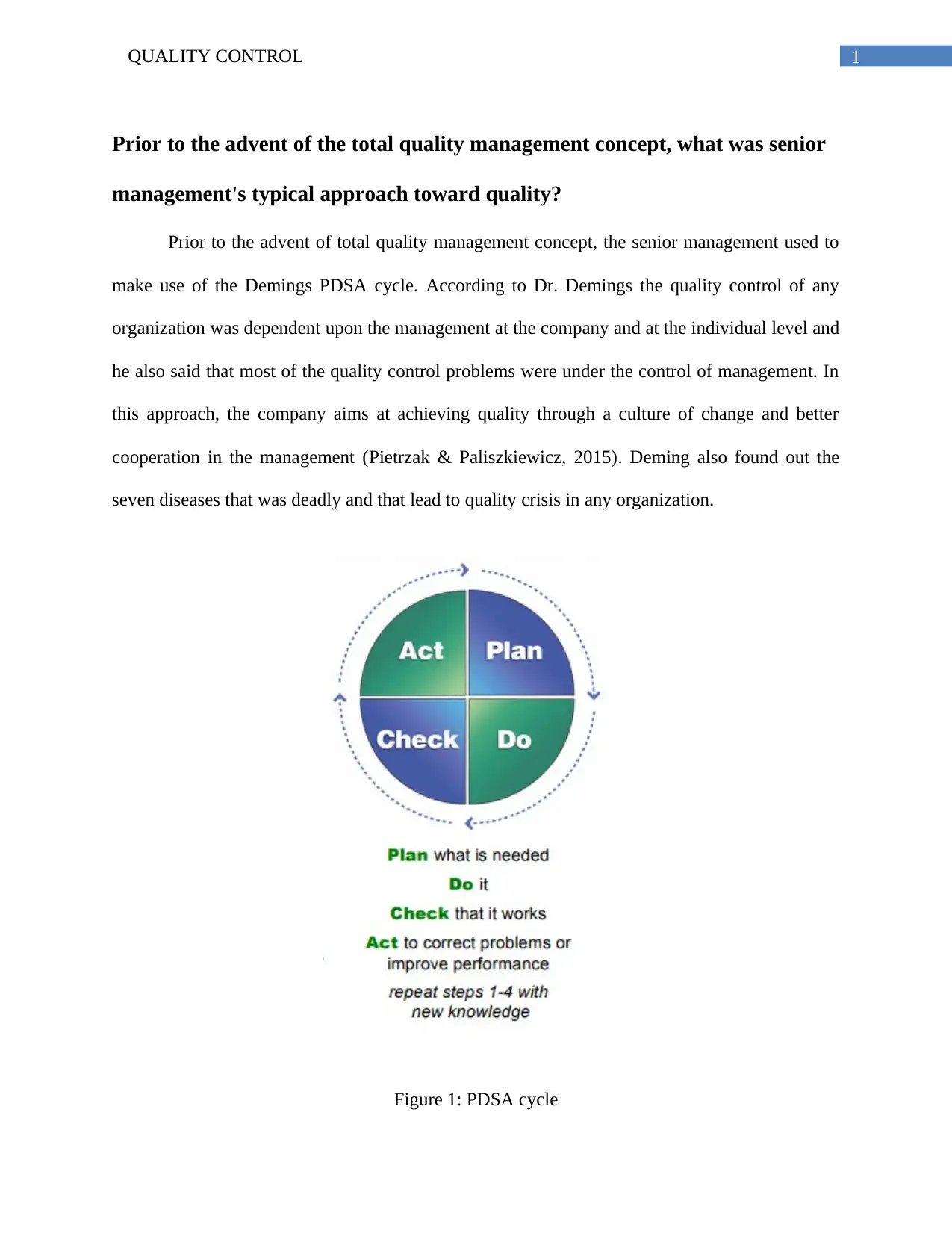
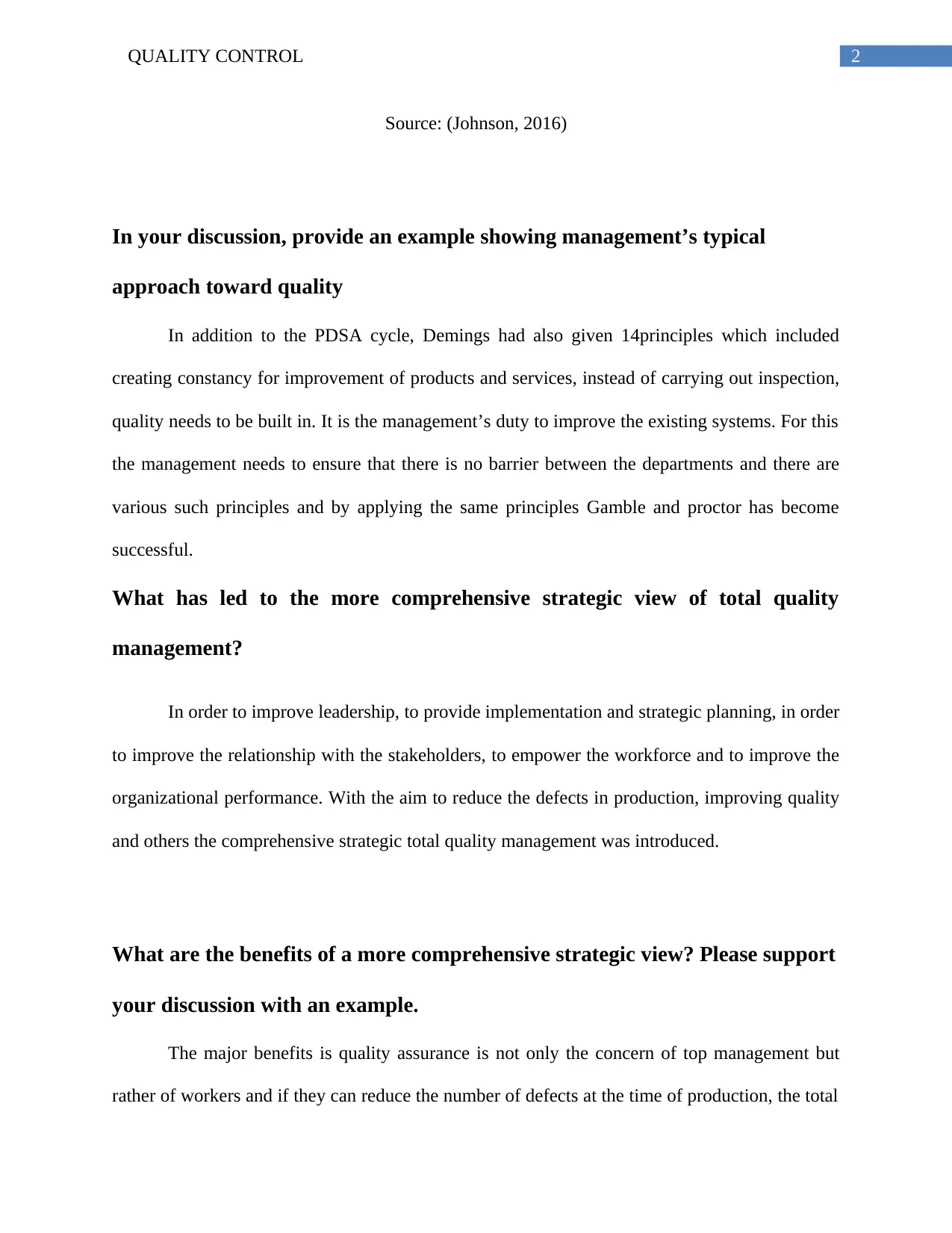

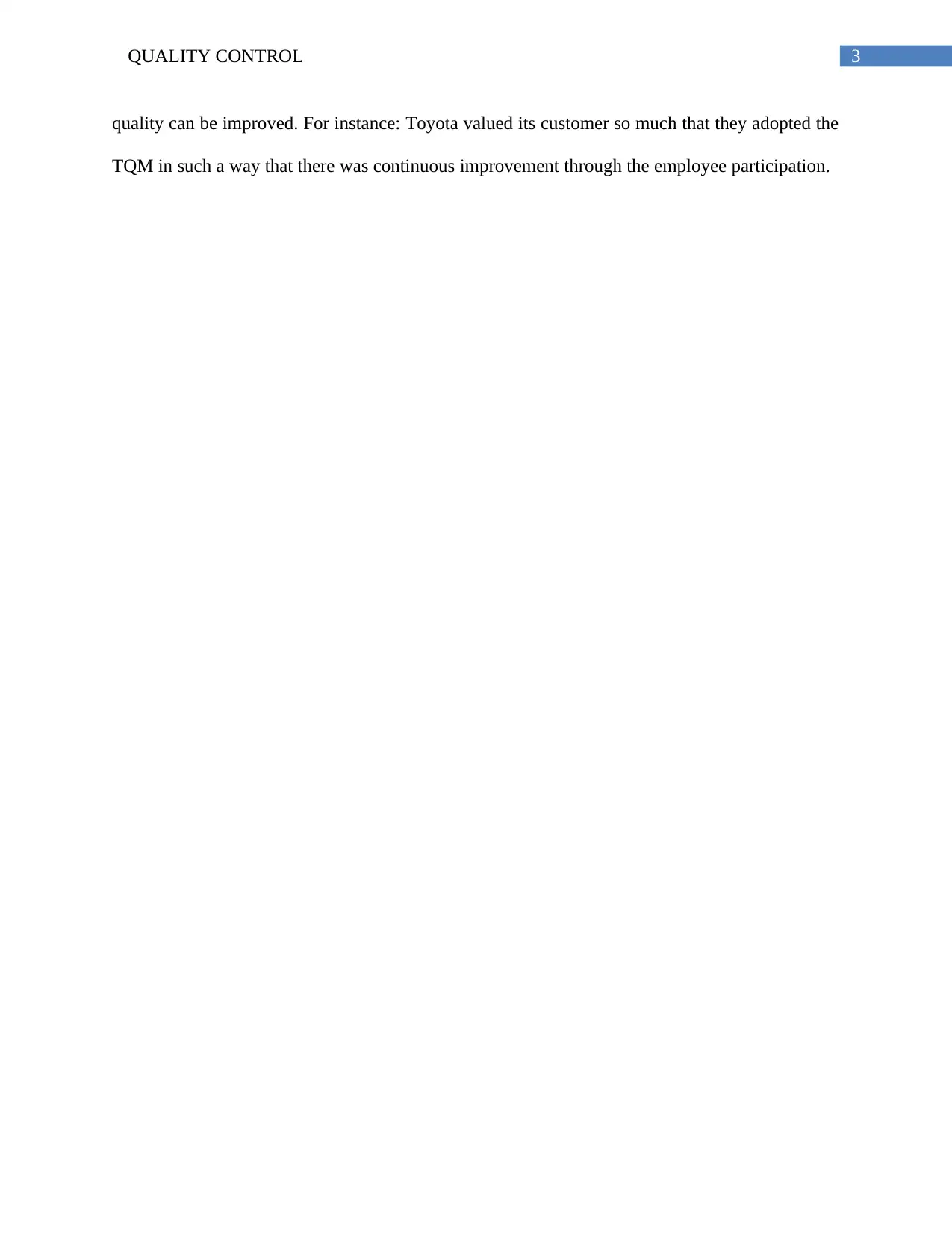
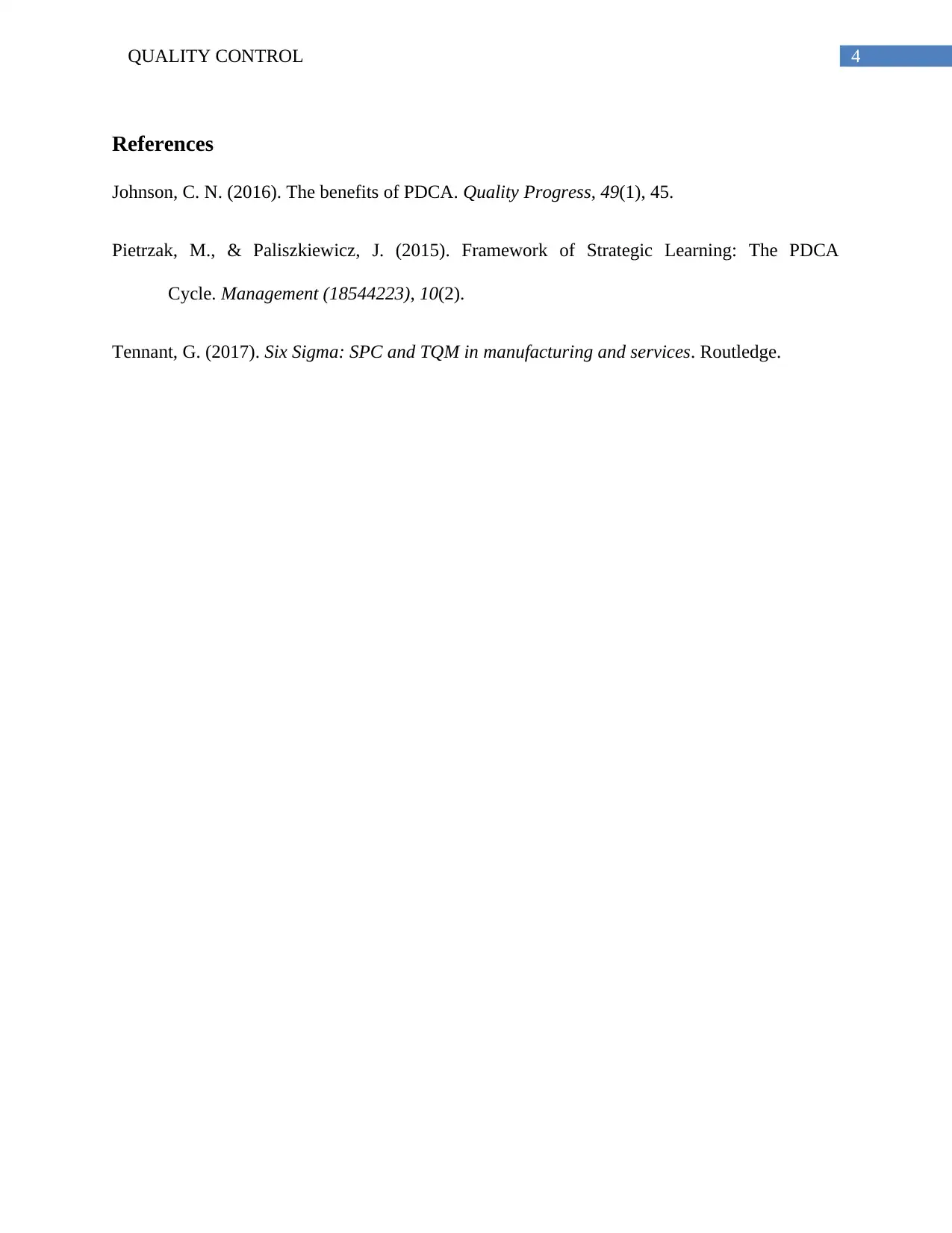
![[object Object]](/_next/static/media/star-bottom.7253800d.svg)